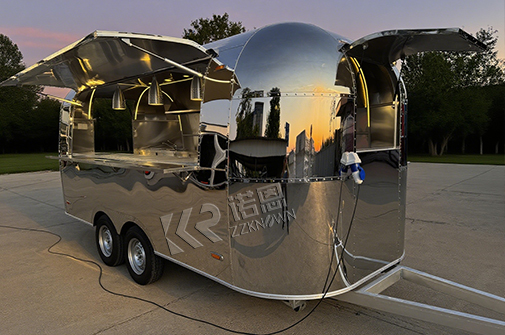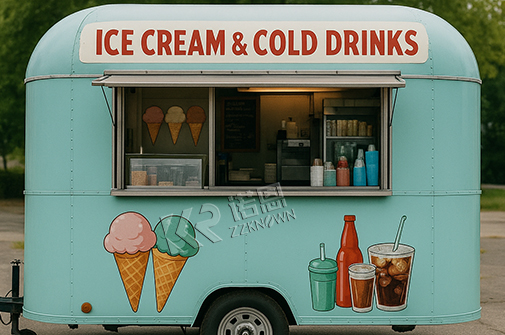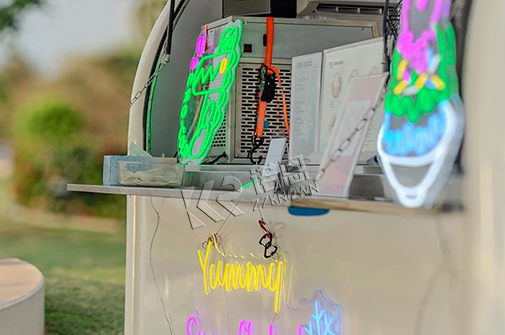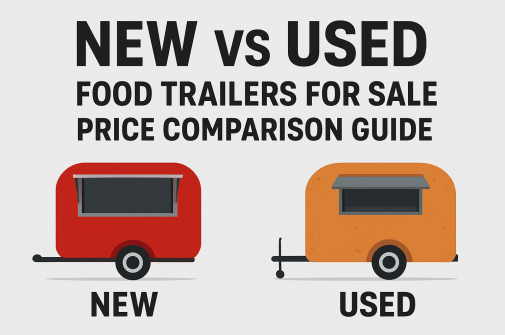Managing payments efficiently is critical for food trailers, where speed, accuracy, and security directly impact customer satisfaction and profitability. From cash transactions to contactless payments, this guide covers actionable strategies to streamline your payment process, reduce errors, and protect your revenue.
Balance convenience and cost by offering popular payment options:
Pros: No transaction fees, instant settlement.
Cons: Security risks, slower processing.
Credit/Debit Cards: Use compact POS systems like Square or Clover.
Mobile Wallets: Accept Apple Pay, Google Wallet, and QR codes.
Online Pre-Orders: Platforms like Toast or Uber Eats for pickup.
Ideal Mix for 2024:
60% digital, 40% cash (varies by location and customer demographics).
A robust POS system is the backbone of efficient payment processing. Key features to prioritize:
| Feature | Why It Matters | Top Tools |
|---|---|---|
| Wireless Connectivity | Works without stable Wi-Fi (e.g., LTE/4G) | Square Terminal, Clover Go |
| Contactless Payments | Speeds up transactions by 30% | SumUp Air, PayPal Zettle |
| Tip Management | Simplifies staff tip distribution | Toast, Revel Systems |
| Sales Analytics | Tracks peak payment methods and times | Shopify POS, Lightspeed |
Case Study: A coffee trailer using Square saw a 25% increase in tips after enabling “Quick Tip” buttons (15%, 20%, 25% presets).
Minimize theft and loss with these cash-handling practices:
Use a Drop Safe: Install a bolted safe with time-delay access.
Regular Deposits: Never leave cash overnight; deposit daily.
Small Float: Keep less than $50 in the register for change.
Counterfeit Detection: Train staff to check bills with UV pens.
Split Shifts: Assign separate staff to handle cash and orders.
Slow lines drive customers away. Speed up payments with these hacks:
Pre-Set Menu Buttons: Program POS shortcuts for top-selling items.
Dual Screens: Let customers view/tap their cards while you prep.
QR Code Ordering: Place codes on tables for self-checkout.
Example: A taco trailer reduced average transaction time from 2.5 to 1.2 minutes by switching to a tap-to-pay-only system during rush hours.
Transaction fees can eat into profits. Reduce costs by:
Negotiate Rates: High-volume businesses can lower fees (e.g., 2.3% → 1.8%).
Surcharge Programs: Pass fees to customers (where legal) with a 3% card surcharge.
Batch Processing: Schedule off-peak processing to avoid peak-time fees.
Note: Check local laws—surcharges are illegal in Connecticut, Colorado, and Massachusetts.
Avoid discrepancies with a strict closing routine:
Count Cash: Compare register totals to POS reports.
Tip Distribution: Use apps like Homebase to automate staff payouts.
Audit Trails: Save digital receipts for 3+ years (IRS requirement).
Tool: QuickBooks Self-Employed automates income/expense tracking.
Backup Power: Use a portable battery (e.g., Jackery) to keep POS running.
Offline Mode: Ensure your POS works without internet.
Cashless Contingency: Post signs like “Card Only During Power Outages.”
Payment Protocols: Role-play scenarios (e.g., declined cards, cash shortages).
Security Drills: Teach staff to spot skimming devices or phishing scams.
Customer Service: Practice polite upsells (“Add a cookie for $2?”).
A smooth payment process not only boosts sales but also builds trust. According to Square, 54% of customers abandon carts if lines are too long, while 72% prefer businesses offering contactless payments.
Final Checklist
By blending secure cash practices with modern digital tools, your food trailer can deliver speedy, secure transactions that keep customers coming back.




